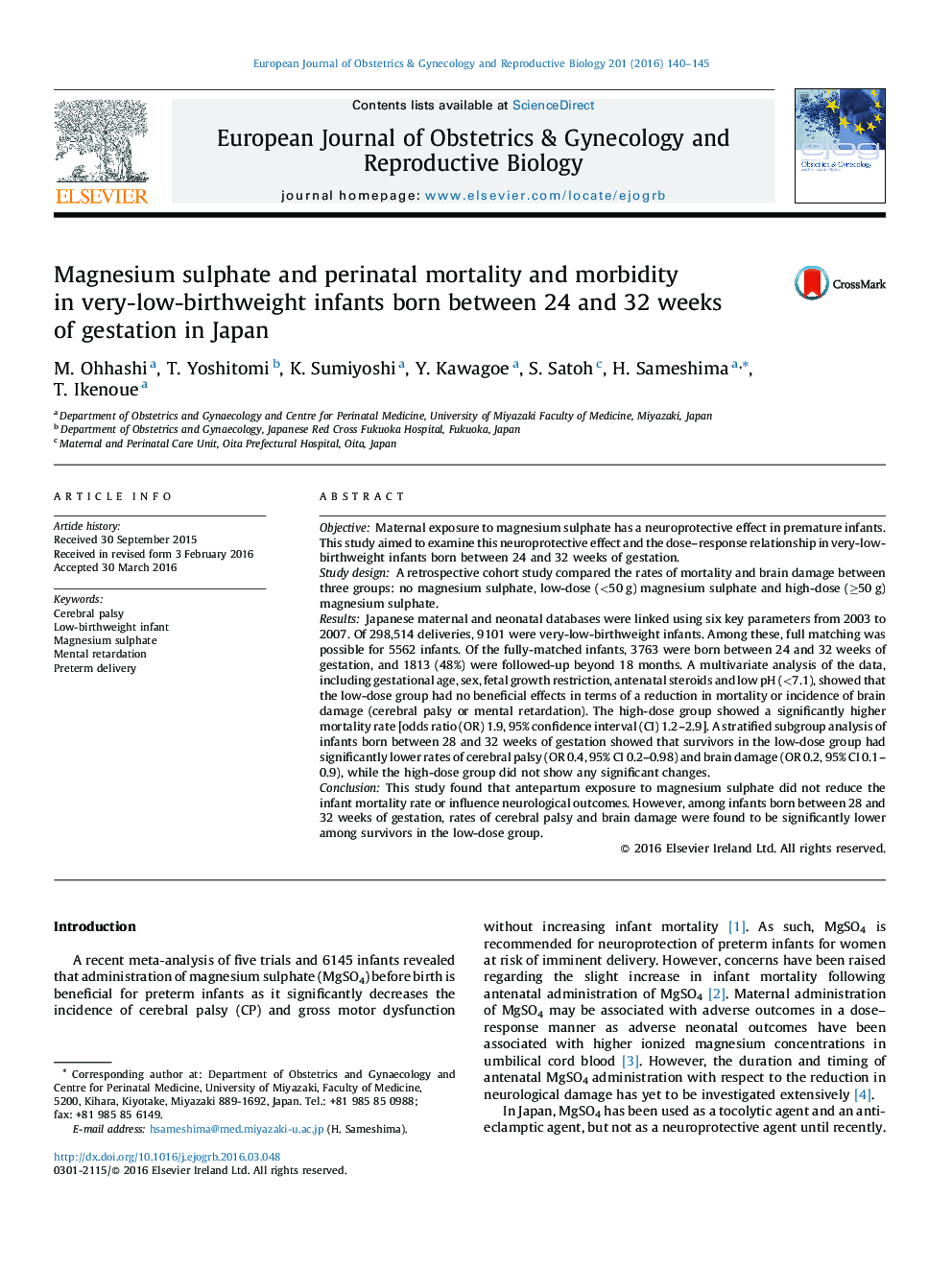| کد مقاله | کد نشریه | سال انتشار | مقاله انگلیسی | نسخه تمام متن |
|---|---|---|---|---|
| 6172898 | 1599780 | 2016 | 6 صفحه PDF | دانلود رایگان |
ObjectiveMaternal exposure to magnesium sulphate has a neuroprotective effect in premature infants. This study aimed to examine this neuroprotective effect and the dose-response relationship in very-low-birthweight infants born between 24 and 32 weeks of gestation.Study designA retrospective cohort study compared the rates of mortality and brain damage between three groups: no magnesium sulphate, low-dose (<50 g) magnesium sulphate and high-dose (â¥50 g) magnesium sulphate.ResultsJapanese maternal and neonatal databases were linked using six key parameters from 2003 to 2007. Of 298,514 deliveries, 9101 were very-low-birthweight infants. Among these, full matching was possible for 5562 infants. Of the fully-matched infants, 3763 were born between 24 and 32 weeks of gestation, and 1813 (48%) were followed-up beyond 18 months. A multivariate analysis of the data, including gestational age, sex, fetal growth restriction, antenatal steroids and low pH (<7.1), showed that the low-dose group had no beneficial effects in terms of a reduction in mortality or incidence of brain damage (cerebral palsy or mental retardation). The high-dose group showed a significantly higher mortality rate [odds ratio (OR) 1.9, 95% confidence interval (CI) 1.2-2.9]. A stratified subgroup analysis of infants born between 28 and 32 weeks of gestation showed that survivors in the low-dose group had significantly lower rates of cerebral palsy (OR 0.4, 95% CI 0.2-0.98) and brain damage (OR 0.2, 95% CI 0.1-0.9), while the high-dose group did not show any significant changes.ConclusionThis study found that antepartum exposure to magnesium sulphate did not reduce the infant mortality rate or influence neurological outcomes. However, among infants born between 28 and 32 weeks of gestation, rates of cerebral palsy and brain damage were found to be significantly lower among survivors in the low-dose group.
Journal: European Journal of Obstetrics & Gynecology and Reproductive Biology - Volume 201, June 2016, Pages 140-145
